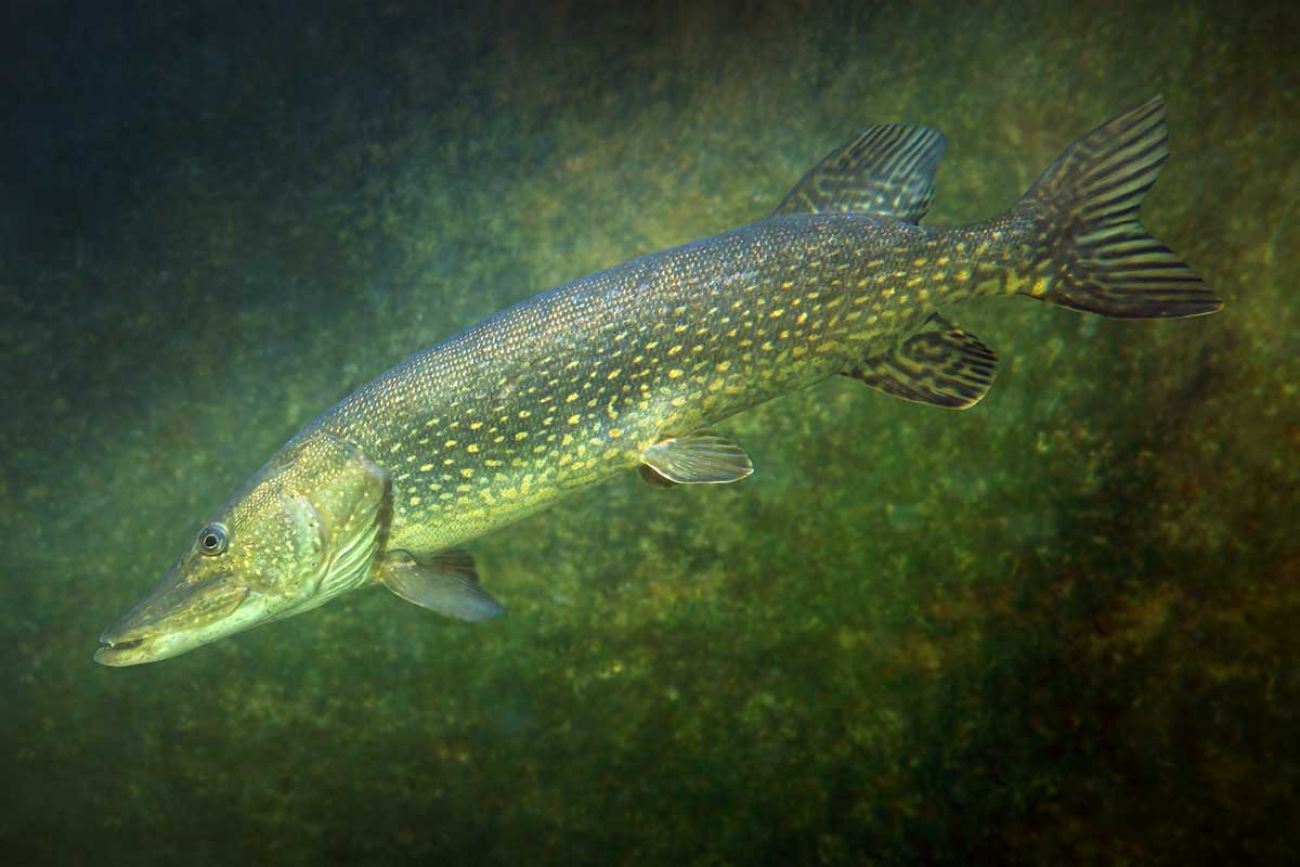Study: Fish can recover from mercury pollution faster than thought

Mercury pollution remains a problem in many parts of the Great Lakes, but new research from Canada’s Experimental Lakes Area in northern Ontario shows that efforts to reduce the amount of mercury going into a lake can have quick and dramatic effects on the levels of the pollutant in fish populations.
Paul Blanchfield – an aquatic ecologist with Fisheries and Oceans Canada – and his colleagues spent 15 years studying how mercury added to a lake affected the ecosystem. For seven years, they added tiny amounts of traceable mercury to the lake, and tracked how it moved it through the water, sediments and animals from tiny plankton up to large fish like northern pike. Once the mercury additions stopped, they spent the next eight years examining how mercury levels declined throughout the lake.
Related:
- Steelhead bag limits reduced in some Michigan waters amid fish declines
- Rising cost of water in Michigan leads to affordability problems
- Steelhead struggle in some Michigan waters. Will a catch limit help
The results, published this week in the journal Nature, showed that mercury levels in plankton and fish fell more quickly than expected once new sources of mercury were cut off. Within the first three years, the amount of mercury declined by 81% in water, 35% in sediments and 66% in plankton – leading to an 85-91% drop in fish by the end of the study.
“When we saw this rapid decline in mercury in the fish populations, we were surprised,” said Blanchfield. Earlier studies that tracked individual fish had found that they held on to mercury in their tissues for a long time. But now they saw that the rate of change in the population allowed overall mercury levels to fall fast.
“New, young fish that had access to a diet lower in mercury led to the drop,” he said, though older, larger fish still had high levels that could pose a risk to human health if they were eaten.
This article is part of The Great Lakes News Collaborative, which includes Bridge Michigan, Circle of Blue, Great Lakes Now at Detroit Public Television, and Michigan Radio. It unites newsroom resources to report on the most pressing threats to the Great Lakes and drinking water supplies, including pollution, climate change, and aging infrastructure. The independent journalism is supported by the Charles Stewart Mott Foundation.
Many fish species in the Great Lakes have consumption advisories that suggest people should limit the amount they eat due to contaminants like mercury, though the state of New York recently increased the amount that is safe for women and children to eat due to the success of policies designed to reduce this kind of pollution.
Linda Campbell, an environmental scientist at Saint Mary’s University in Halifax, has been following this work with interest for years. She said it demonstrates the need to reduce sources of mercury in lakes, though we should not expect to see as immediate a response in a more dynamic and complex system such as the Great Lakes.
“The Great Lakes have multiple sources of mercury, including legacy sources like the Areas of Concern,” she said. “If we reduce one source we may not see immediate results, but it does help.”
That’s the advantage of the simplified, single-lake system in this experiment, said Blanchfield. The direct link between reductions in mercury pollution and levels in fish are difficult to demonstrate in more complicated lake systems like the Great Lakes, where multiple different factors like invasive species and altered food webs can affect how mercury moves through the ecosystem.
“It’s hard to understand mercury when so many other things are going on at the same time,” he said. “With our study it’s just one thing at a time.”
After recent moves to weaken the regulations around mercury pollution in the U.S., this work is a timely reminder of how important these rules are.
“Any policies that reduce mercury emitted and pollution in lakes will decrease the mercury concentration in fish,” said Blanchfield. “This is a good demonstration that these policies do work.”
Michigan Environment Watch
Michigan Environment Watch examines how public policy, industry, and other factors interact with the state’s trove of natural resources.
- See full coverage
- Subscribe
- Share tips and questions with Bridge environment reporter Kelly House
Michigan Environment Watch is made possible by generous financial support from:
Our generous Environment Watch underwriters encourage Bridge Michigan readers to also support civic journalism by becoming Bridge members. Please consider joining today.
See what new members are saying about why they donated to Bridge Michigan:
- “In order for this information to be accurate and unbiased it must be underwritten by its readers, not by special interests.” - Larry S.
- “Not many other media sources report on the topics Bridge does.” - Susan B.
- “Your journalism is outstanding and rare these days.” - Mark S.
If you want to ensure the future of nonpartisan, nonprofit Michigan journalism, please become a member today. You, too, will be asked why you donated and maybe we'll feature your quote next time!






